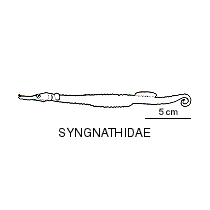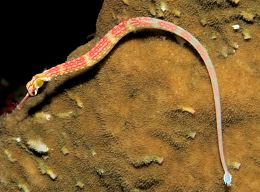Rank Family | Scientific name Syngnathidae Phylum Chordata Order Syngnathiformes | |
Lower classifications | ||
The Syngnathidae is a family of fish which includes the seahorses, the pipefishes, the pipehorses, and the leafy, ruby, and weedy seadragons. The name is derived from Greek, syn, meaning "fused" or "together", and gnathus, meaning "jaws". This fused jaw trait is something the entire family has in common.
Contents
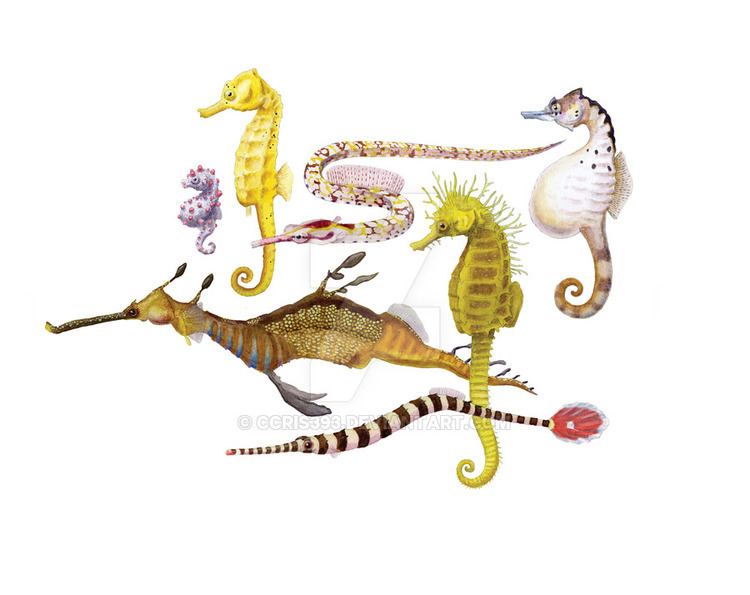
Description and biology
Syngnathids are found in temperate and tropical seas across the world. Most species inhabit shallow, coastal waters, but a few are known from the open ocean, especially in association with sargassum mats. They are characterised by their elongated snouts, fused jaws, the absence of pelvic fins, and by thick plates of bony armour covering their bodies. The armour gives them a rigid body, so they swim by rapidly fanning their fins. As a result, they are relatively slow compared with other fishes, but are able to control their movements with great precision, including hovering in place for extended periods.

Uniquely, after syngnathid females lay their eggs, the male then fertilizes and carries the eggs during incubation, using one of several methods. Male seahorses have a specialized ventral pouch to carry the eggs, male sea dragons attach the eggs to their tails, and male pipefish may do either, depending on their species. The most fundamental difference between the different lineages of the Syngnathidae family is the location of male brood pouch. The two locations are on the tail (Urophori) and on the abdomen (Gastrophori). There is also variation in Syngnathid pouch complexity with brood pouches ranging from simple ventral gluing areas to fully enclosed pouches. In species with more developed, enclosed pouches it has been demonstrated that males directly provide their brood with not only nutrients but also immunity to pathogens. Syngnathids with more developed brood pouches are also known to be able to partially or completely abort a brood from a female with low fitness.
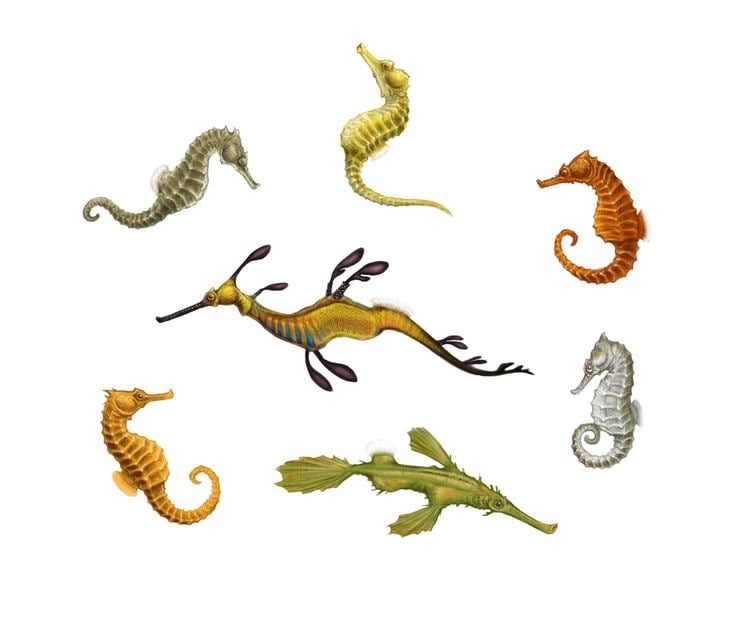
A wide variety of mate choice and mating competition has been observed in Syngnathidae. For example, Hippocampus fuscus exhibits conventional sex roles of males competing for female access while Corythoichthys haematopterus is completely sex role reversed. Most conventional sex role syngnathids are monogamous whereas sex role reversed species mostly exhibit polygamous behavior.
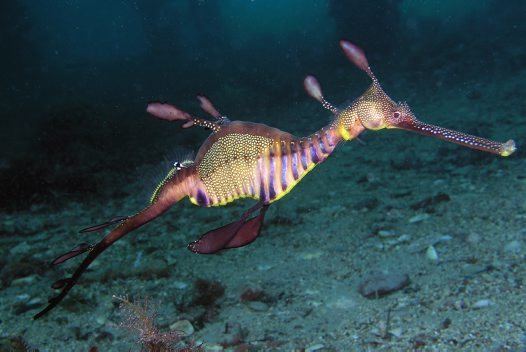
Seahorses and pipefish also have a unique feeding mechanism, known as elastic recoil feeding. Although the mechanism is not well-understood, seahorses and pipefish appear to have the ability to store energy from contraction of their epaxial muscles (used in upward head rotation), which they then release, resulting in extremely fast head rotation to accelerate their mouths towards unsuspecting prey.
Classification
